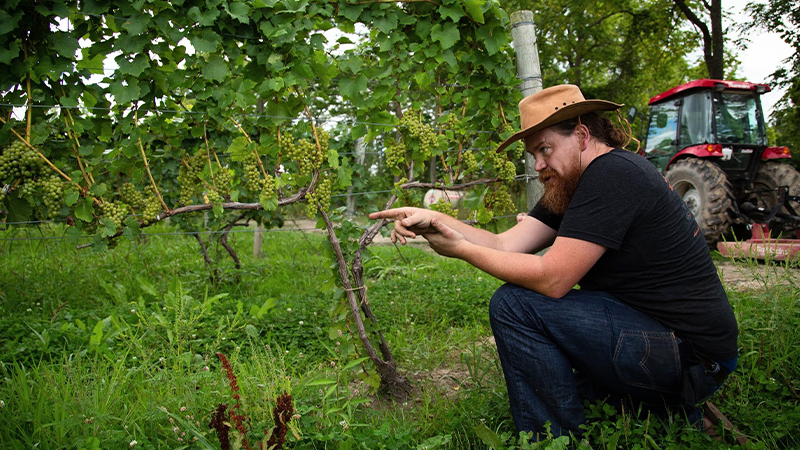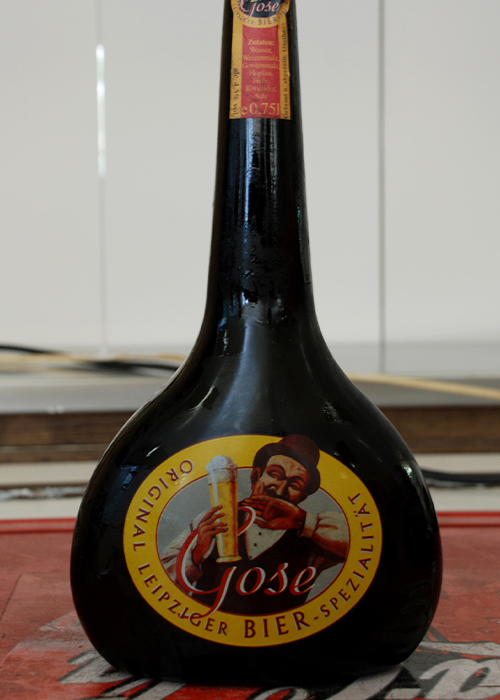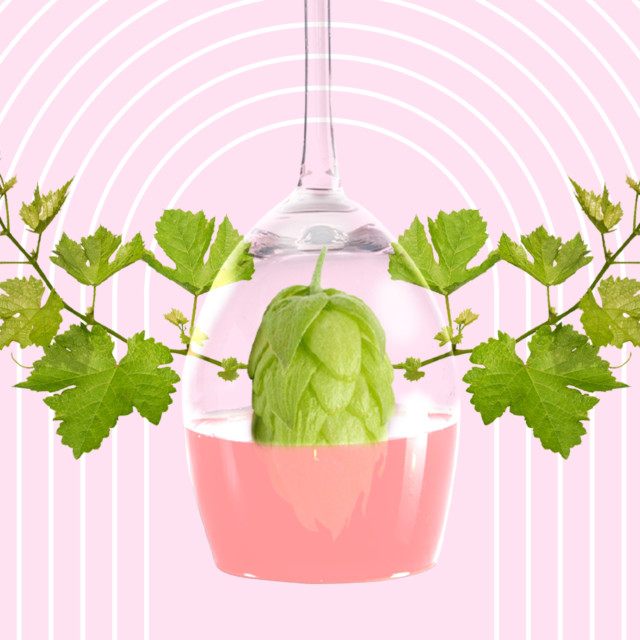A wine drinker wanting to expand their horizons and learn about beer might look first to the wine professionals they’ve trusted for advice in restaurants and wineries, only to be puzzled by Instagram posts about late-night PBRs at local dives or cases of Miller High Life guzzled during harvest. They might, understandably, be quite confused about this apparent duality. Every day, these pros use their granular knowledge of a niche topic to create new and profound experiences for wine drinkers. Somms are trained to detect the slightest nuance in a wine. Why would they be interested in something as mass-produced as Coors Banquet?
“What’s impressive about macro lagers is how drinkable they are,” says master sommelier Christopher Bates of FLX Hospitality. “The brilliance is in the use of adjuncts to create something very light-bodied. You can drink them and not feel full. When doing lawn work or intense harvest work, they don’t weigh you down.”
“Macro lager” is beer brewed on an extreme scale with the specific goal of creating a relatively neutral, light-bodied beverage. The adjuncts that Bates mentions are typically rice and corn, used to balance body and alcohol while imparting lighter flavors than malted barley would. It’s worth mentioning that these beers represent the majority of beer sales in America and brand loyalty among their customers, including wine pros, can be quite high.

Context Is Everything
This apparent contradiction is relatively easily explained. Wine people spend their professional lives analyzing and fixating on wine. They think hard about it. They taste a ton of it. “Think about when you have just tasted through a flight of very tannic red wine or very high-acid white wine. Your palate is tired and you just want something that is cold, easy and refreshing,” says Etinosa Emokpae of Skurnik Wine and Spirits.
Even the wines that wine people tend to guzzle post-shift are simpler than you’d think. “I’m also not drinking 15-year-old Chateauneuf-du-Pape after a long shift. I want ice-cold Muscadet or Dolcetto,” Bates says. It’s clear that this contradiction isn’t quite what it seems. Context is important. And, when wine pros sit down for the first time after 12 hours working on their feet, they might want something different than when they throw a party with friends or sit down to dinner. That 15-year-old Chateauneuf-du-Pape might wind up on the same table with a cellar aged Belgian Tripel. In fact, those two might even be paired with the same dish.
James Priest, brewer and co-owner of The Referend Bier Blendery, adds that there’s some economic complexity that explains somms’ beer choices: “They’re cheap. Whether that’s the driving factor because of one’s personal budget or to try to maintain some grounding semblance of class solidarity after serving a $1,200 bottle to some lunching jolly bankers probably depends on the individual.”

Trust the Experts
Plenty of wine people are passionate about great beer and vice-versa. If you’re someone who’s been turned on to beautiful and thought-provoking wine by a sommelier, you’re in luck. While your somm might spend the hours after work downing frosty crispy boys, there’s a great chance that they have a compelling suggestion made from some combination of barley, wheat, hops, and yeast that could become your new obsession.
At the very least, your somm knows you. They know what you like in wine, and that can be quite easily translated to the world of beer. They’re the one who taught you that Nebbiolo goes well with braised beef and that high-alcohol wines can be a dangerous combination with spicy food. They know that you prefer lighter, fruitier reds and that you haven’t yet found a Grüner Veltliner you like. This means they’ll be able to put you onto a fruited sour or hazy IPA you might love. They might start you with something bold like a barleywine because they know you respond to densely concentrated flavor. Or, they could pull a bottle of lambic since you tend to respond to wild ferments and fruit flavors.
A common thread to be found among beverage pros is an insatiable desire for knowledge. As the beverage community becomes more diverse and interconnected, more beverage professionals have training in or passion for more than one discipline. One example is Priest, a brewer who recently bought a vineyard. He says that “local or outright estate beers that properly convey terroir from a range of local grains, herbs and fruits, the water, and indigenous/ambient yeasts should appeal to wine folk.”
Emokpae values things that are quite refreshing. “The gose style of beer in particular is perfect [for me] because it has the saltiness coupled with a light body that makes these beers so crushable,” she says. Bates casts a wide net, drinking “small-production pilsner, the great barrel-aged beers, and lambic.” It’s clear that these people all have different tastes that can be context-specific. They all share a passion for bringing great beverages to good people.
The best advice to anyone looking to learn more is to never be shy. If you’re a forward-thinking, organic-loving, socially conscious human who wants to consume brews that reflect your worldview, ask for that when you walk into a store or restaurant. If you have a particular style in mind, ask about it. It’s always great practice to develop a relationship with experts who understand their field and your tastes. So, if you’re a regular at a wine bar, ask that somm about beer. They already know what you like, and they can help you translate that into a little bit of knowledge for the beertender you encounter later on who has 40 brews on tap and opinions on all of them.
